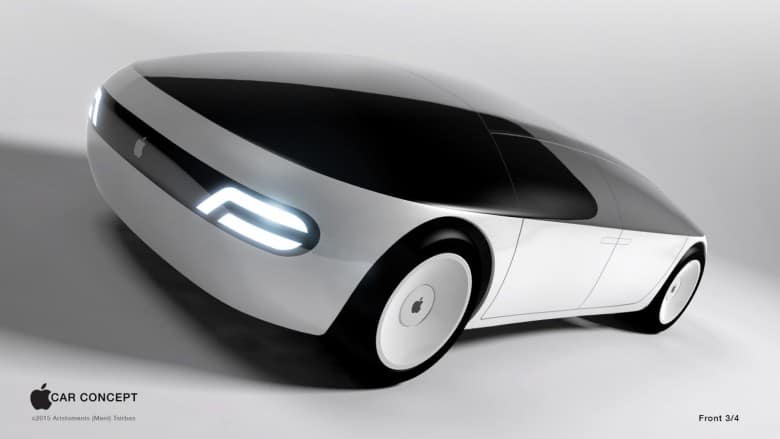A car designed to test Apple’s self-driving system was involved in a minor accident Monday, but a human was driving at the time. This is only the second such crash of an Apple car on record.
Google, and its autonomous vehicle spinoff Waymo, haven’t been so lucky over the years.
The description Apple filed regarding last week’s accident (.pdf) says:
On October 15th at 10:28 AM, an Apple test vehicle in manual mode was side swiped while preparing to turn left onto Stewart Drive from North Wolfe Road. The Apple test vehicle was traveling at approximately 5 MPH when a Toyota Camry traveling at approximately 15 MPH crossed out of its lane and contacted the Apple test vehicle. Both vehicles sustained minor damage and no injuries were reported. The police were notified that the driver of the Toyota Camry left without exchanging information.
The first reported accident involving an Apple car occurred in August. That time, a car rear-ended an Apple vehicle operating in self-driving mode.
Compare that to Waymo/Google, whose vehicles have been involved in 38 traffic incidents going back to 2014.
Apple self-driving cars seem quite safe
There are no known accidents in which Apple’s autonomous control system was at fault. But the picture we have of autonomous car testing remains far from complete. In addition to California, these cars can be tested in Arizona, Michigan, Nevada and Pennsylvania, though. Only California requires that the public be notified of every accident involving a self-driving car.
Over the years, Google and Waymo self-driving cars have been in more than 17 times as many traffic accidents in California. In 2018, Waymo test vehicles have been in 11 collisions; Apple vehicles have been in only two. This despite the fact that the two companies have nearly the same number of test vehicles operating in California. At last count, Apple has 70 and Google has 88.
However, due to the secrecy of these projects, we don’t have enough data to properly compare the two self-driving systems’ safety and performance. For instance, we have no way of knowing how many actual miles each platform has logged. Nor do we know what types of driving conditions the cars have been operating in. And, of course, we don’t know how Apple’s and Waymo’s autonomous vehicles fare in states outside California.
How safe is Waymo’s autonomous car software?
Still, the numbers of accidents that each company’s cars have been in says something about the reliability of their respective software. While there’s no publicly available data to compare miles driven, it’s not as if the numbers of accidents are close. Google/Waymo isn’t having slightly more accidents. Its cars have been in many times more collisions, with approximately the same size test fleet.
This holds true despite the fact that a majority of the incidents involving a Google/Waymo vehicle were the other driver’s fault. It’s not clear what causes so many people to rear-end Waymo cars, but at some point the company has to realize that it must be doing something wrong. Because, so far, it’s happening to Apple’s vehicles much less often.
Note: This story has been updated to include more information and context about Apple’s and Waymo’s self-driving car programs.


